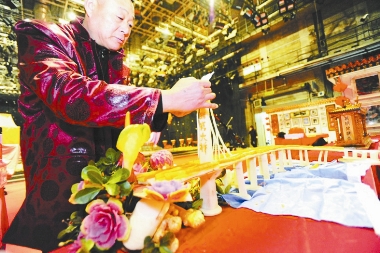 A RADISH version of Qingdao’s Gulf Bridge, the world’s longest bridge over water, is on exhibition at Chuanbao Folk Museum, Damawan Village, Jiaodong Town, Jiaozhou City, Shandong Province. It was produced by a 47-year-old folk artist Cui Chuanbao. Compared with the 42.5-kilometer-long bridge, Cui’s radish version is 1.3 meters long, 0.2 meters wide and 0.3 meters high. It was made of radish, carrots, ginger and leaves. Most of the bridge was made of radish with decorations of leaves and peonies made from carrots, calla lilies and pear blossom. The radish bridge will last only one to two days. Water is needed to make it live longer. “Although food carving works have a short life and die soon after exhibitions, their artistic effect is long-lasting,” said Cui. The Gulf Bridge, which opened in early January, took four years to build and employed at least 10,000 people. Some 450,000 tons of steel and 2.3 million cubic meters of concrete were used in the construction. It is designed to withstand severe earthquakes, typhoons and collisions with ships. (Jane Lai) | 
